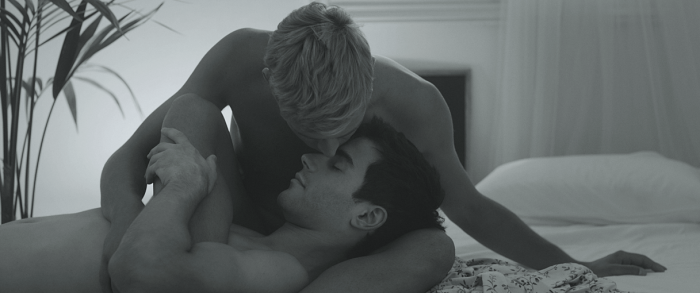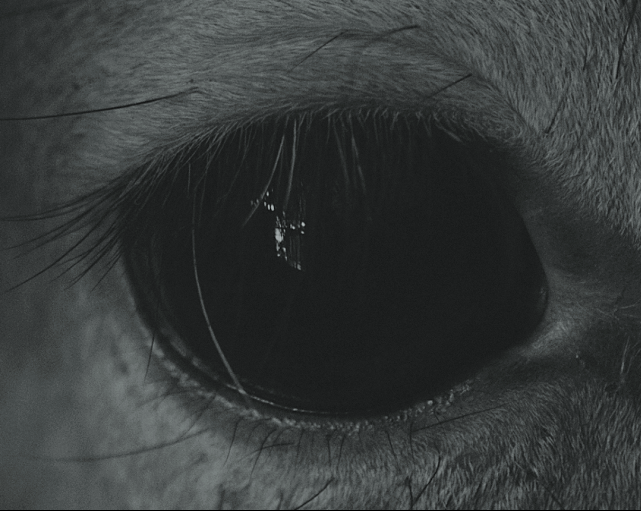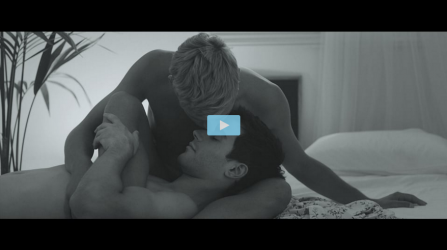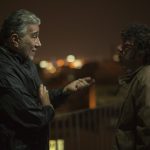By Lauren Hurrell
Fawns is a poignant Greek film made by Thanasis Tsimpinis that portrays an emotive love story between two men with the use of beautiful, natural imagery, displayed in nostalgic black and white, and an intensely poetic narrative voiceover. The slow motion scenes of the lovers, interspersed with moments of a young fawn, heighten the emotional catharsis of the unfolding narrative. It is dreamlike, with language that is transferrable to describe the breakdown of various love stories, not just the narrative between a mother deer and its fawn.
The talented director, Thanasis Tsimpinis, shares with us his ideas and inspiration to make this commendable cinematic project.
Did you approach making this film with a primary intention?
I wanted to make a film about deer for a while. I believe they are beautiful creatures, full of grace. But what really triggered me was a picture of a fawn in the set of my previous film, called Dust. There was something magical about it and I kept thinking that my next story should be about this particular baby deer. It is the same picture that appears in Fawns.
The film is captured in black and white. What was your reasoning for this creative decision?
I like to believe there are three dimensions in the film. The boys in the past (bedroom), the boys in the present (laundrette) and the deer in an unspecified time (nature). What I really wanted to show is that these worlds are parallel and besides their obvious differences, they actually interact. Having that in mind, I made the aesthetic choice of filming the pieces in black and white. So one could see the film as a whole in the end.
The narration of the fawn story is delivered with admirable, poetic intensity. Did the fawn story form the backbone of this film or did you come across it with the project already in mind?
The fawn story was actually what brought life to the film. After I had seen that picture, I started researching deer on the internet. Anything that would inspire me to write a tale. Then, I came across an informative article saying pretty much the same thing as what the boy narrates in the film. I immediately thought that this behaviour of the deer could actually be applied to any kind of love. So why not the loving relationship between two men?

Did you face any struggles in the process of making Fawns?
Well, deer were kind of difficult to shoot. We had to offer them fruits and other goodies to earn their trust and make them approach the camera. But editing the film was the real struggle. If you think about it, there were thousands ways for these shots to be combined and this kind of creative freedom made the decisions really hard to take. I had to follow my instinct.
What were your highlights of the creative process? Do you have any personal favourite elements of the film?
The highlight for me would be the music and sound design. It was so intense being in the process while those elements were adding an extra dimension to the world(s) of Fawns. I believe that the sound had a huge impact on how emotional the outcome was. But undeniably, the best element of the film would be its cinematography (by Konstantinos Koukoulios) that actually won the award at the 20th Athens International Film Festival.
Is Fawns, or your approach to filmmaking in general, influenced stylistically by any other films or directors?
In Fawns, I was inspired by the latest music videos by director (and singer-songwriter) Woodkid who has created some really sharp, dramatic images in black and white. I admire many directors who are considered to be visionary, such us Christopher Nolan, Darren Aronofsky, Stanley Kubrick, Alejandro González Iñárritu, Wes Anderson, Tim Burton and Guillermo Del Toro.
Are you currently working on any projects?
Yes, I am still working on TV commercials, music videos and fashions films while preparing for my next short (but probably longer than Fawns) film.
Watch Fawns free on FilmDoo.com.
Find more shorts on FilmDoo here.






